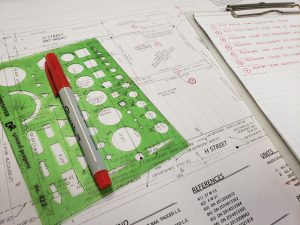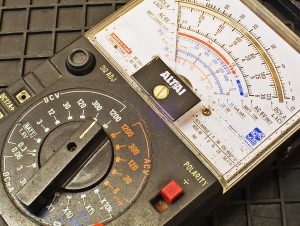Installing an off-grid solar system is only half the job. The other half is making sure it actually works—and keeps working when you’re miles from shore power. A multimeter, a bit of know-how, and a systematic approach can save you from warm fridges, dead laptops, and that sinking feeling when your lights flicker out in the middle of the woods.
Pre-Installation Checks
Before you bolt down the last bracket, test every piece of gear individually:
-
Panel Voltage: Use a multimeter to check open-circuit voltage (Voc). Compare it to the panel’s rated Voc on the label. If it’s wildly off, you’ve got a bad panel or connection.
-
Polarity: Always confirm positive and negative before plugging into a controller or inverter. Reverse polarity = instant magic smoke.
-
Battery Voltage: Measure resting voltage to confirm charge level and health before connecting anything. A “12V” battery sitting at 11.5V is already unhappy.
-
Continuity Checks: Test wires end-to-end to ensure no breaks and that your crimped connectors are solid.
Catching mistakes now is a lot cheaper than after the system is live.
First Power-Up: What to Watch
When you first flip everything on, check things step by step:
-
Panels → Controller: Make sure your controller is recognizing panel input. Compare amps/volts displayed with your multimeter.
-
Controller → Battery: Watch charging current. If your batteries don’t budge, something’s wrong.
-
Battery → Inverter: Power up the inverter with a small load (light bulb, fan) before testing bigger loads.
-
Full System Load Test: Plug in your heaviest appliance (microwave, coffee maker). Watch for voltage sag or inverter alarms.
Think of this as a shakedown cruise—you want to stress-test the system in a controlled way before relying on it.
Common Problems & Fixes
-
System Won’t Turn On: Check fuses, breakers, and battery disconnects first. 90% of the time, it’s something simple.
-
Panels Producing Low Power: Could be shading, dirty glass, or a bad connector. Use your meter at the panel leads to verify.
-
Inverter Shuts Down Under Load: You may be undersized, have weak batteries, or suffer from voltage drop in DC cables.
-
Battery Not Charging: Double-check controller settings (battery type, charge profile). Wrong settings can undercharge or overcharge.
-
Weird Readings: Often traced to loose or corroded connections. Wiggle-test each terminal (power off first).
Tools of the Troubleshooting Trade
-
Digital Multimeter: Non-negotiable. For voltage, amps, and continuity.
-
Clamp Meter (DC capable): Lets you measure current without breaking connections. Super handy for tracing loads.
-
Infrared Thermometer: Hot spots = resistance = bad connection.
-
Spare Fuses & Connectors: Nothing halts troubleshooting like realizing the fix is back at the hardware store.
Panel Output Verification
Panels are notorious for “I think they’re working” issues. To check:
-
Disconnect from the controller.
-
Measure Voc (open-circuit voltage). Should match spec within 10–15%.
-
Short-circuit test (Isc) if your meter can handle it (check specs first). This gives you the max amps.
-
If Voc is fine but Isc is low, you’ve got shade, dirt, or a failing panel.
Battery & Inverter Load Testing
-
Battery Test: Charge fully, then run a known load (say, a 100W bulb). Monitor voltage drop over time. Rapid drops = weak battery.
-
Inverter Test: Connect a device near its surge rating (like a microwave). If it trips early, check cables for undersizing before blaming the inverter.
Diagnostics in All-in-One Systems
Power stations make this easier. Built-in screens and apps show watts in, watts out, and error codes. If something seems off:
-
Compare app data to actual usage (a 500W coffee maker should show ~500W output).
-
Check error codes—many point directly to overcurrent, overheat, or input limits.
-
If input watts are low, clean panels and confirm you’re within the unit’s solar spec range.
Real-World Strategy
-
Baseline Numbers: After setup, record “normal” readings (panel input at noon, inverter load with fridge on, etc.). Later, you’ll spot problems faster by comparing.
-
One Change at a Time: When troubleshooting, isolate variables—disconnect everything and test one piece at a time.
-
Don’t Panic: 80% of issues are wiring, connectors, or user error. Start with the basics before assuming your $1,000 inverter died.
Wrapping It Up
Testing and troubleshooting aren’t glamorous, but they keep your system alive. A multimeter and a little patience turn mysterious outages into minor hiccups. Learn your system, take notes, and don’t skip the boring checks—you’ll thank yourself when your lights stay on and your fridge stays cold.
Your Turn
-
Have you ever discovered a miswired connection during your first power-up?
-
Do you carry a multimeter or clamp meter on every trip, or just trust your system?
-
What’s your go-to method for checking panel performance—meter, controller readout, or app?
-
Have you ever had an inverter trip under load, and what was the culprit?
-
Do you enjoy troubleshooting, or is it just the necessary evil of off-grid life?






